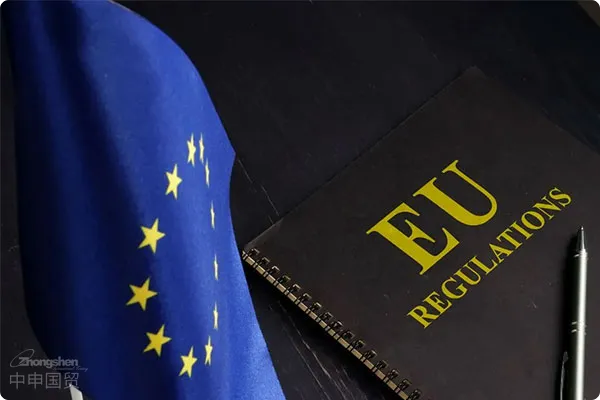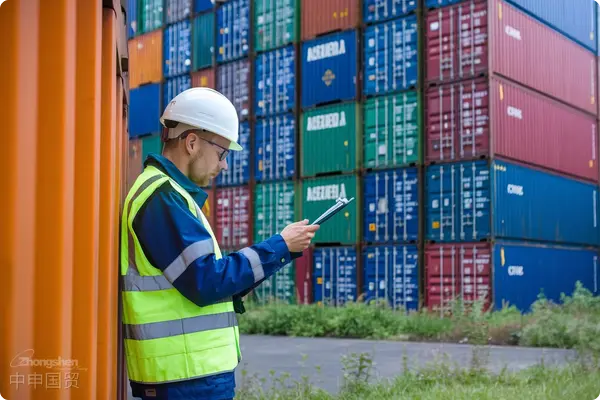- Shanghai Zhongshen International Trade Co., Ltd. - Two decades of trade agency expertise.
- Service Hotline: 139 1787 2118
EU New Battery Regulation (2023/1542)The official effective date is August 18, 2024. From August 18, 2024, all provisions and requirements of the regulation will begin to be enforced within the EU.
This means that from August 18, 2024, battery manufacturers, importers, distributors, and other relevant stakeholders must comply with all provisions of this regulation. This includes strict requirements for battery design, production, labeling, carbon footprint reporting, recycling targets, etc. If they do not meet these regulations, relevant enterprises may face legal consequences or be prohibited from selling their products in the EU market.
I. Background of the New EU Battery Regulation
This regulation covers multiple aspects such as hazardous substance control, carbon footprint, CE conformity assessment, labeling requirements, and due diligence, and requires enterprises to implement it in phases. The following are the detailed implementation content as of the key time point of August 18, 2024, and the coping strategies for enterprises.

II. And Coping Strategies
Limits on Hazardous Substances
The new regulation strictly restricts the use of hazardous substances in batteries, mainly including:
1、REACH法規:It is required to strictly comply with the restricted substances listed in Annex 17.
End - of - Life Vehicles Directive (Directive 2000/53/EC):
? Lead: ≤0.1%
? Mercury: ≤0.1%
? Hexavalent Chromium: ≤0.1%
? Cadmium: ≤0.01%
Battery Directive:
? Mercury: ≤0.0005%
? Cadmium: ≤0.002% (Portable Batteries)
? Lead: ≤0.01% (Portable Batteries)
Response Strategies
Enterprises need to re - evaluate their supply chains and raw material sources to ensure compliance with the new limits on hazardous substances. It is recommended to cooperate closely with suppliers to obtain a statement of conformity and necessary chemical composition analysis reports to prove the compliance of products.
Electrochemical Performance and Durability
Rechargeable industrial batteries, electric vehicle batteries, and light - duty vehicle batteries with a capacity greater than 2 kWh must provide detailed documents on electrochemical performance and durability parameters. These documents should prove that the product performance meets the strict EU standards.
Response Strategies
Enterprises should conduct comprehensive performance tests on battery products to ensure that their durability and electrochemical performance meet EU standards. It is recommended to develop and optimize internal testing procedures to ensure that all products meet the requirements.
Safety of Stationary Battery Energy Storage Systems
Stationary battery energy storage systems must prepare safety technical documents containing the following:
(1) Warning signs for fire or explosion prevention.
(2) Test certificates for eliminating safety hazards.
(3) Complete safety parameters, such as thermal shock and cycling, external short - circuit protection, etc.
(4) Assessment of safety hazards.
Response Strategies
Enterprises should strengthen the safety testing and assessment process to ensure the safety of stationary battery energy storage systems. It is recommended to cooperate with third - party certification bodies to obtain relevant safety certifications and test reports.
Labeling, Marking, and Information Requirements
All batteries must clearly indicate the content of lead and cadmium, and provide detailed parameters of health status and expected lifespan for stationary energy storage systems, light - duty vehicle batteries, and electric vehicle batteries.
Response Strategies
Enterprises need to ensure that their product labels meet the requirements of the new regulation and prepare detailed technical documents to support the accuracy and compliance of the label information. It is recommended to review and update the existing labels.
Battery Management System
Starting from August 18, 2024, all stationary energy storage systems, light - duty vehicle batteries, and electric vehicle batteries must be equipped with a battery management system that can store and provide key data on the batterys health status and expected service life.
Response Strategies
Enterprises should develop or purchase a battery management system (BMS) that meets the requirements and ensure that it can be seamlessly integrated with battery products. It is recommended to test and verify the functions of the BMS to ensure its reliability and data accuracy.
CE Conformity Assessment Procedure
All battery products must complete the CE conformity assessment, specifically including:
(1) Submitting a statement of conformity.
(2) Preparing technical documents covering basic information of the enterprise and the battery, production process, performance/safety parameters, labeling, etc.
(3) Providing test reports.
Response Strategies
Enterprises need to establish a comprehensive compliance process to ensure that all products complete the CE conformity assessment before entering the EU market. It is recommended to develop detailed technical documents and cooperate with certification bodies to ensure that all assessment steps are completed on time.
III. Future Obligations: Carbon Footprint and Recycling
Carbon Footprint
Enterprises need to monitor and report carbon emissions during the production and use of batteries.
Use of Recycled Materials
Promote the use of recycled materials to reduce dependence on virgin resources.
Waste Battery Recycling
Establish an effective recycling and reuse system to ensure the environmentally friendly treatment of waste batteries.
Response Strategies
Enterprises should start preparing for future compliance work, establish a carbon footprint monitoring system and a waste battery recycling system. It is recommended to conduct a life - cycle analysis to identify opportunities to reduce the carbon footprint and increase the use of recycled materials.
Conclusion
The new EU battery regulation has put forward higher requirements for the environmental protection and safety standards of battery products. Enterprises need to take immediate action to ensure compliance with these new requirements before August 18, 2024. By formulating detailed compliance strategies and optimizing product design and supply chain management, enterprises can maintain their competitiveness in the new regulatory environment.
Related Recommendations
? 2025. All Rights Reserved. 滬ICP備2023007705號-2  PSB Record: Shanghai No.31011502009912
PSB Record: Shanghai No.31011502009912









